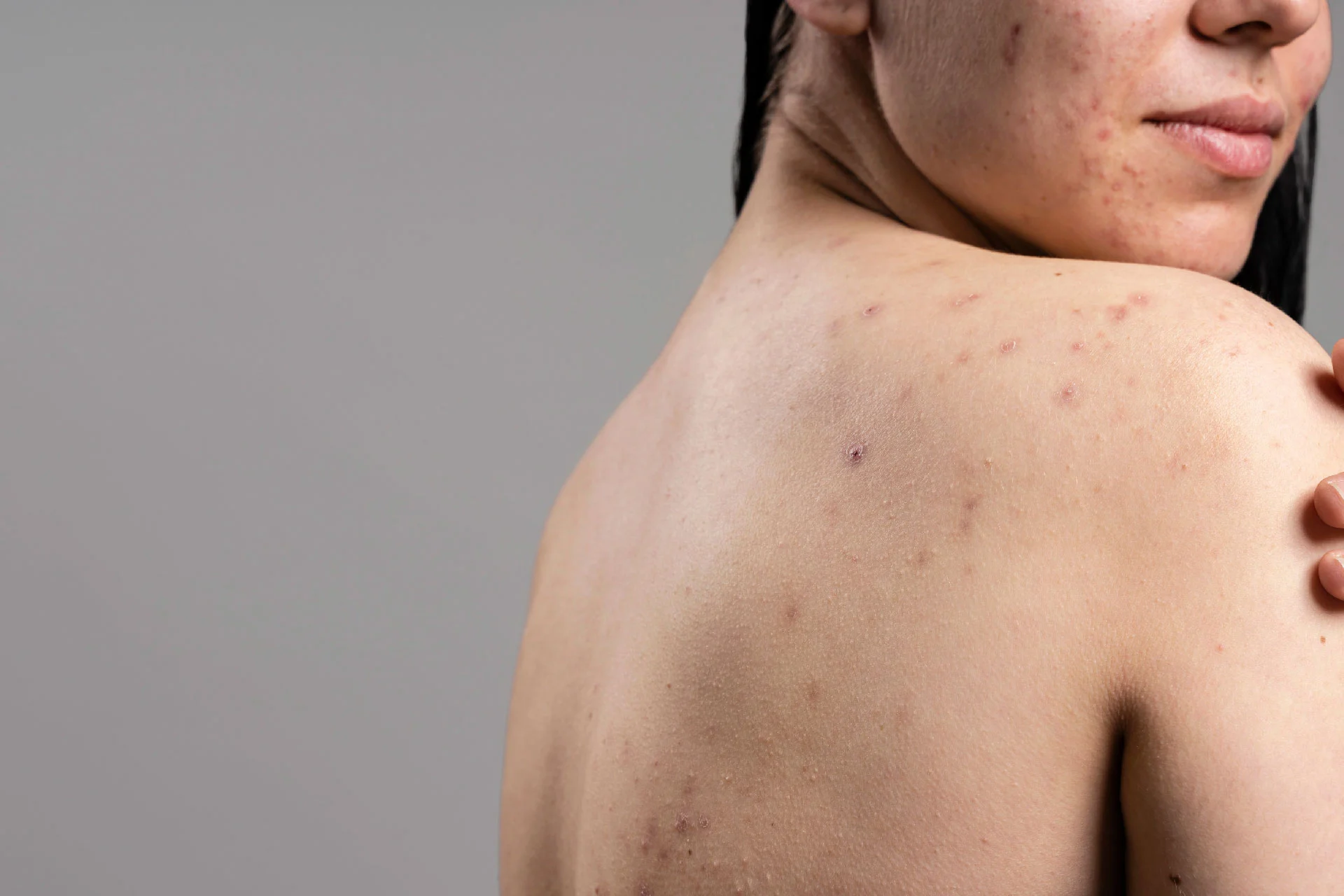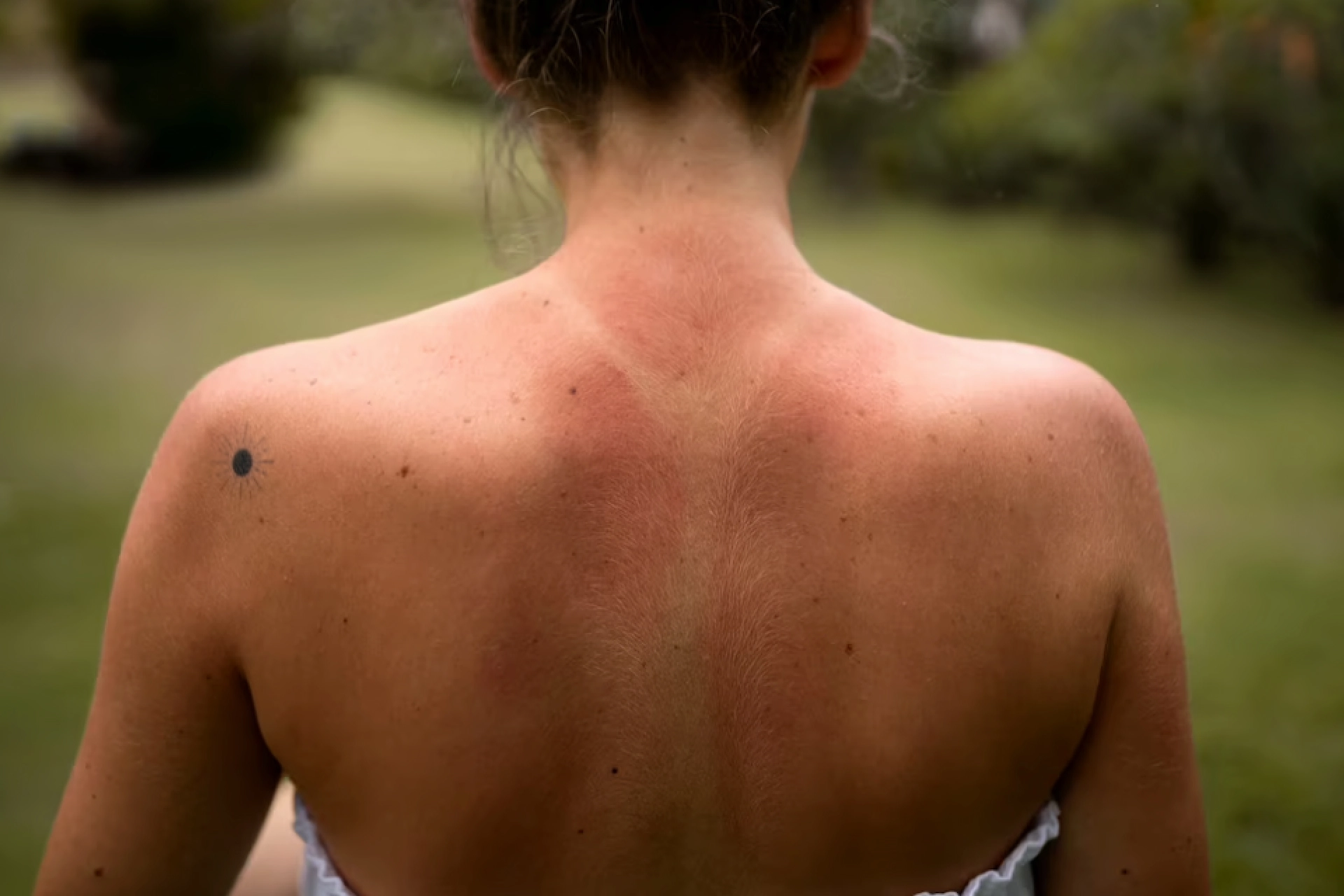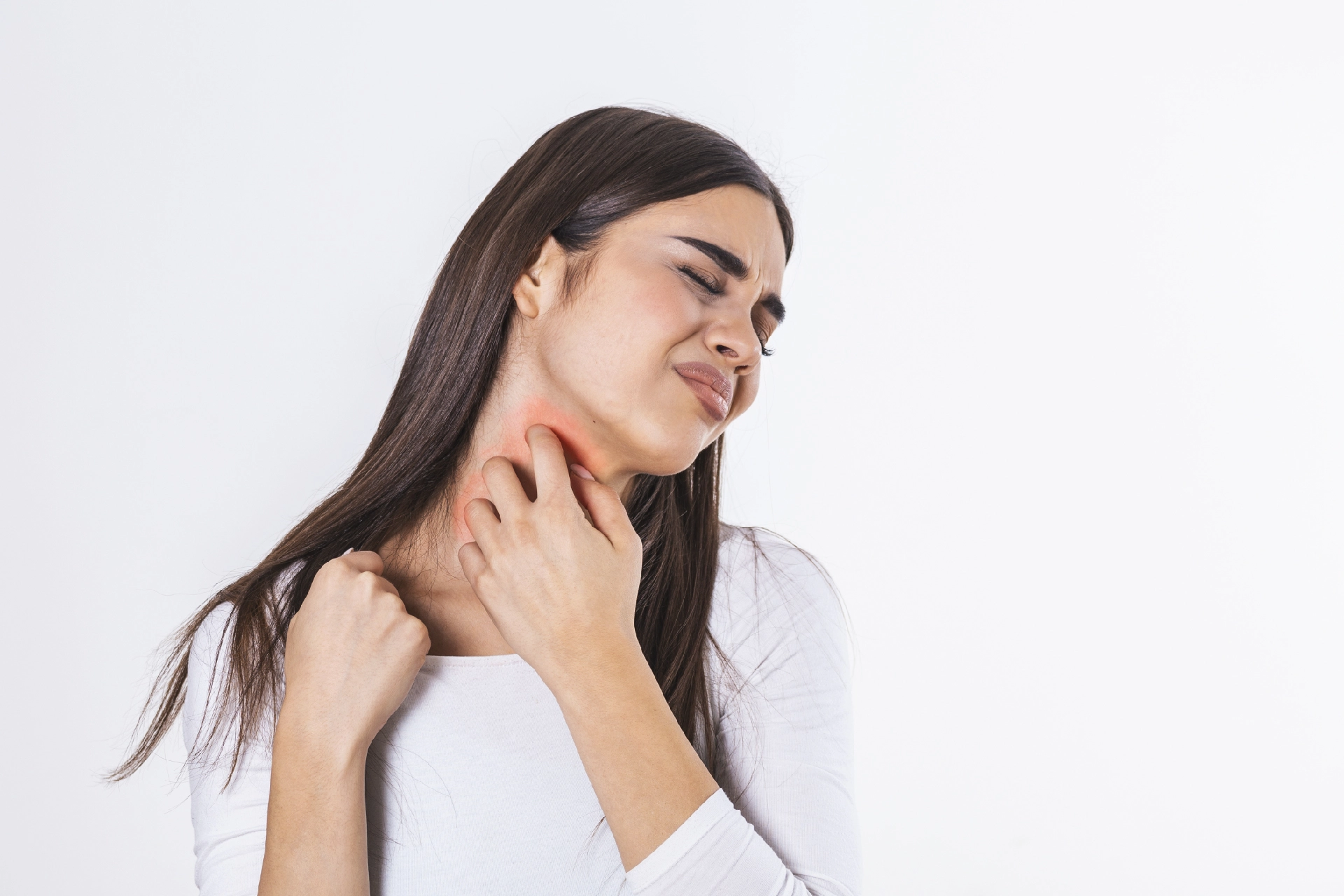Physical Medicine and Rehabilitation | 6 min read
Back Acne: Early Symptoms, Prevention, Diagnosis, Type
Medically reviewed by
Table of Content
Synopsis
Though back acne usually is not something to worry about, there can be complications such as severe flare-ups, intense pain, high fever, and more. Find out how to diagnose and treat the condition.
Key Takeaways
- Acne is a quite common skin condition all over the world
- Back acne may or may not cover all of your back
- If home remedies don’t heal back acne, doctors may recommend antibiotics
Acne is a common skin condition worldwide, affecting over 80% of individuals in all ethnic groups [1]. Back acne or acne is a type of acne that gets formed on your back. When your skin pores in the back get clogged by dead skin cells, sweat, oil, and bacteria, it leads to back acne. In addition, any friction in your back can worsen the condition, so using sports equipment or backpacks or wearing sweaty shirts can become challenging with back acne. Read on to learn more about back acne, its causes, and remedies.
What is Back Acne?
If you have back acne, pimples will appear on your back as blackheads, whiteheads, or red humps. They can be disturbing and painful.
Sweat may get stuck under your shirt or athletic gear when you are into a strenuous activity or exercise, and it may lead to back acne. Also, in case of friction between your clothing and your skin, the back acne may get worse.
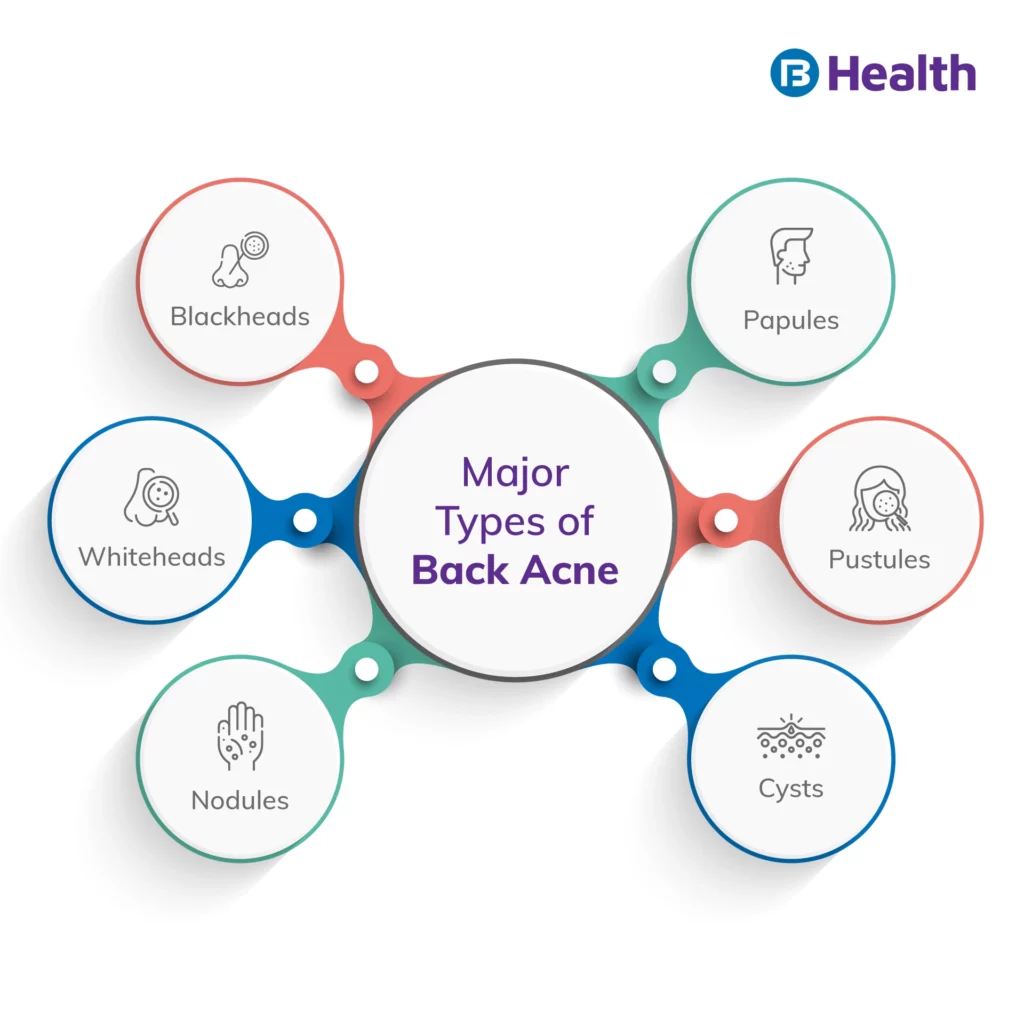
Back Acne Causes
The pores of your skin get clogged due to various factors, such as sweat, dead skin cells, dirt, and an oil called sebum. Note that your body prepares sebum to protect your hair and skin from getting dry.
In case the sebum production in your body becomes abnormally high, or you do not follow basic skin hygiene, it can lead to clogged pores.
Here are the most common acne causes:
Friction:
Sporting equipment, backpacks, shirts, and other clothes that brush against your skin may lead to the formation of back acne. If you already have back acne, exposure to these may worsen the condition
Medications:
Some drugs, such as contortionists, can cause or worsen back acne
Hormones:
Pregnant women and individuals in their adolescence are at high risk of getting acne breakouts due to hormonal changes
Skin care products:
Certain creams and lotions may fill up your pore, leading to the development of back acne
Dirty hair, clothing, towels or sheets: If you don’t maintain basic skin hygiene, it can affect your skin health badly, leading to clogged pores and eventually back acne
Genetics:
If back acne was common in your earlier generations, there is a high chance of you having the same
Trapped sweat: Sweat can get confined between your skin and clothing, which leads to clogged pores and back acne in no time.
Anxiety and stress:
High levels of anxiety and stress boost the production of the cortisol hormone in your body. Increased secretion of this hormone also increases the production of sebum, and it can lead to the formation of back acne
Additional Read: How To Get Rid Of Pimples NaturallyEarly Signs and Symptoms of Back Acne
Back acne may develop only surrounding your upper back and shoulder or covering your entire back. These flare-ups can be irritating, and they usually get formed in clusters. The symptoms include either one type of pimple or a combination of the following:
- Cysts resulting from cystic acne
- Blackheads
- Whiteheads
- Res bumps without a ‘head’
- Nodules resulting from nodular acne
Diagnosis of Back Acne
Identifying the signs of back acne is simple. If there are a lot of pimples on your back and you experience flare-ups on a regular basis, it is a potential symptom of back acne.
Under such circumstances, talk to your healthcare provider immediately. They may recommend consultation with a dermatologist, who will make a proper diagnosis and recommend suitable treatment.
Additional Read: Acne Homeopathic RemedyBack Acne Treatment
After consulting a dermatologist, you can conveniently opt for back acne treatment at home. Here are some things to keep in mind:
Cleanse your skin regularly
You can use an oil-free, non-comedogenic body wash during bathing to ensure that it won’t lead to clogged pores. Don’t scrub your skin with rough cleansing brushes. It can worsen the flare-ups of back acne.
Don’t squeeze or pop the pimples
It can lead to acne scares or infected pimples, causing further damage to your skin.
Make sure your linens are clean
Washing your towels, pillowcases, and sheets on a regular basis is crucial not to allow bacteria to settle in
Apply topical gels, creams, and cleansers: You can use benzoyl peroxide products, an acne sticker, or a retinoid gel for best results
If back acne doesn’t improve even after applying these home remedies, your dermatologist may recommend the following:
- Prescription skin care medicines
- Oral medications
- Antibiotics
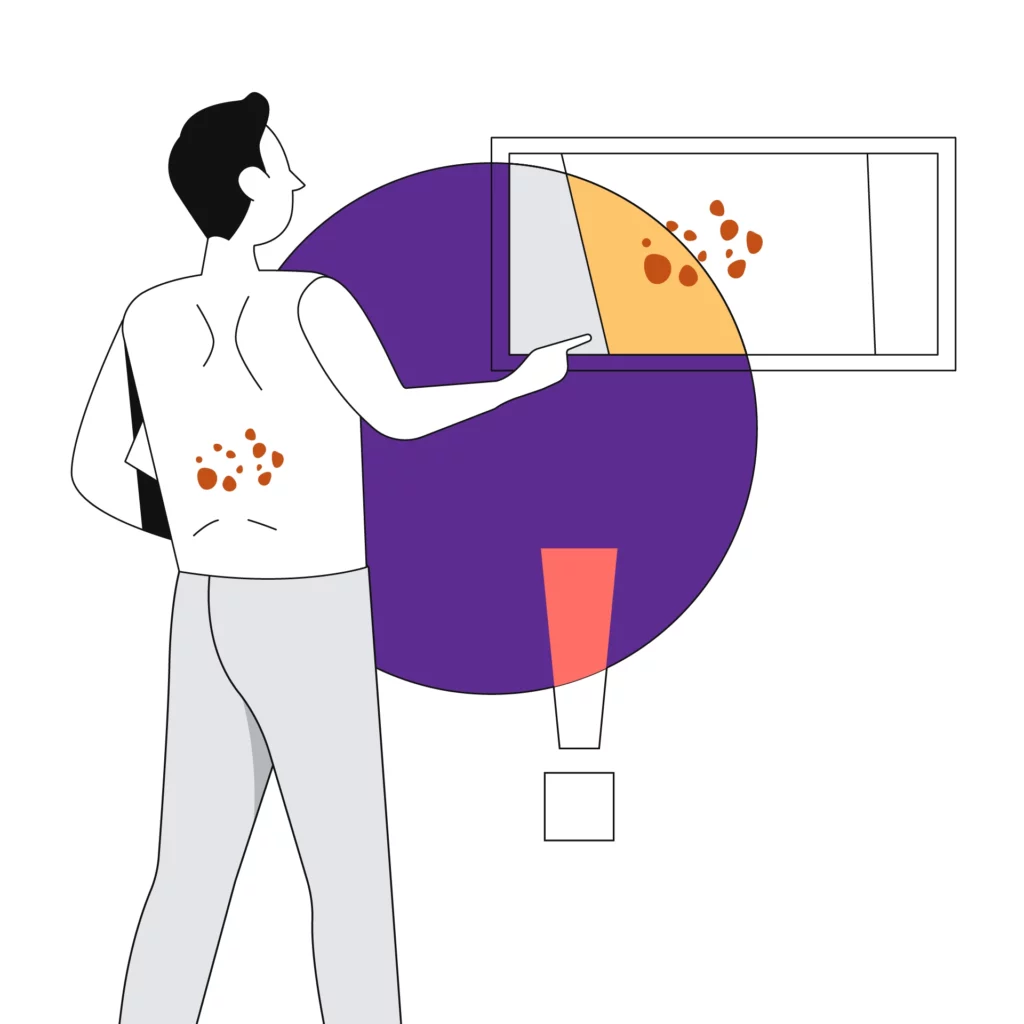
Complications of Back Acne
Back acne may sometimes show certain complications. Do consult your doctor if you experience the following:
- The flare-ups become severe, and they keep returning
- There are pimples or hard nodules deep under your skin
- You are experiencing intense pain from the inflamed acne
- You have a high fever, which indicates an infection
Types of Back Acne
Usually, there are the following types of back acne:
Blackheads:
When a blocked hair follicle on the surface of your skin opens and appears as a small black bump, it is called a blackhead or open comedowns. Remember that blackheads have black tips due to a reaction between the air and sebum; it has nothing to do with dirt.
Whiteheads:
Also known as closed comedowns, back acne leads to whiteheads when a blocked hair follicle stays plugged under your skin and develops white bumps.
Nodules:
When bacteria become confined in hair follicles below the surface of your skin, big nodules come out as flare-ups. This back acne can cause minor damage to your tissues under the skin.
Papules:
These are acne lesions that resemble tiny pink bumps and can be sensitive. Remember, this type of back acne doesn’t develop pus, and they result from swelled hair follicles.
Pustules:
Also known as pimples, pustules are yellow or white pus-filled pa pules with a red base. Swelling in blocked hair follicles leads to these lesions. This swelling is caused by a build-up of white blood cells.
Cysts:
Lesions of cysts are quite bigger, and like nodules, they also become visible if bacteria get trapped in hair follicles. The major difference between the two types of back acne is that cystic acne infection is deeper in comparison, which gives birth to an irritating lump and scar
How to prevent Back Acne?
Preventing back acne altogether may not be possible. However, you can apply the following remedies to lower the risk:
- Look whether any medicine is causing the back acne; ask your doctor for an alternative
- Maintain cleanliness
- Keep your stress levels low
- Use sunscreen
- Limit friction caused by backpacks and sports equipment
- Wear loose-fitting clothing
- Apply non-comedogenic products to your skin
- Change sweaty clothes as soon as possible
With all these facts and FAQs about back acne at your disposal, managing the condition will become quite convenient. Still, in case of any queries related to back acne, you can book an online appointment with a doctor on Bajaj Finserv Health and resolve your doubts.
As your skin health reflects your overall appearance, it’s high time to priorities it without failure!
References
- https://www.ncbi.nlm.nih.gov/pmc/articles/PMC6122864/
Disclaimer
Please note that this article is solely meant for informational purposes and Bajaj Finserv Health Limited (“BFHL”) does not shoulder any responsibility of the views/advice/information expressed/given by the writer/reviewer/originator. This article should not be considered as a substitute for any medical advice, diagnosis or treatment. Always consult with your trusted physician/qualified healthcare professional to evaluate your medical condition. The above article has been reviewed by a qualified doctor and BFHL is not responsible for any damages for any information or services provided by any third party.
